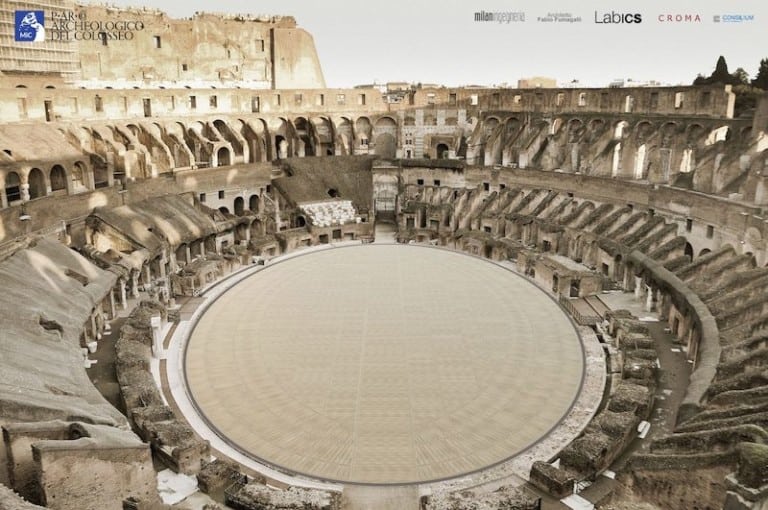Milan Ingegneria will create the retractable floor alongside architecture studio Labics and architect Fabio Fumagalli. It will be installed in Rome by 2023.
The arena’s new floor will replace the original floor, which was removed in the 19th century. It will be a historically accurate recreation of the ancient floor.
During a press conference on May 2, Culture Minister Dario Franceschini said the contract is “another step forward towards rebuilding the arena”.
Milan Ingegneria awarded Colosseum contract
He said the ambitious project will “aid the the conservation and safeguarding of the archaeological structures while getting back to the original image of the Colosseum and restoring its character as a complex stage set”.
The retractable floor will be created using innovative building techniques and sustainable materials, and will contribute to the conservation of the site’s underground structures.
Colosseum Archaeological Park director Alfonsina Russo said the “reconstruction of the arena helps turn back the hands of time, finally providing the public with the same view of the monument’s stage floor that ancient spectators had”.
Russo said the project allows for “a more complete appreciation of the site” and highlights “the importance of conservation through highly technological structural solutions aimed at long-term eco-sustainability”.
Colosseum arena floor installed by 2023
The floor will be made from Accoya wood and will boast moveable panels that rotate and shift, while 24 mechanical ventilation units will control the temperature and humidity of the underground rooms.
“With its various configurations, created by opening and moving the slats, the new floor will gradually reveal the underground structures to the visitors demonstrating their detailed structure,” said the Colosseum Archaeological Park.
“In this way, it will be possible to understand the complex functional nature of the underground areas and their interaction with what used to happen above.”
Images: Colosseum Archaeological Park













